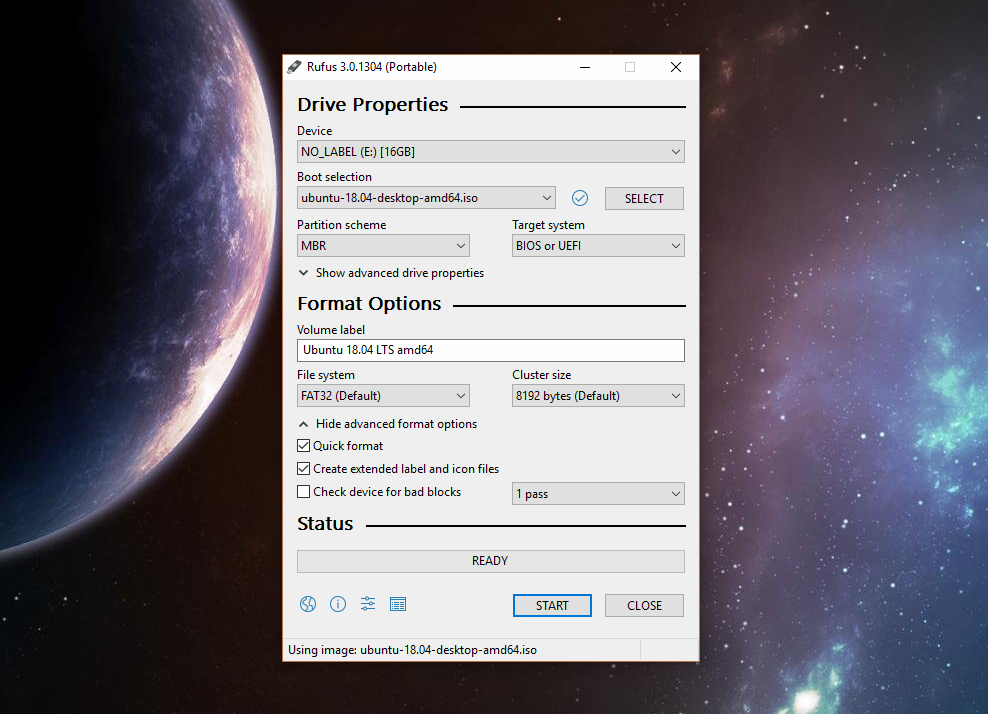

- CREATE GPARTED LIVE USB ON MAC HOW TO
- CREATE GPARTED LIVE USB ON MAC MAC OSX
- CREATE GPARTED LIVE USB ON MAC INSTALL
- CREATE GPARTED LIVE USB ON MAC PORTABLE
- CREATE GPARTED LIVE USB ON MAC PC
This will aid in the installation of a fresh Mac OS. Warning: The instructions on this page will destroy all data currently on the USB stick being used. Users download the macOS Big Sur ISO file in order to create a bootable USB drive. Step 8: Copy all files from gparted-live-1.0.0-3-amd64 to your thumb drive. Step 7: Double-click on gparted-live-1.0.0-3-amd64.zip to unzip folder.
CREATE GPARTED LIVE USB ON MAC HOW TO

When done copying, right click on the DVD drive and select Eject. Navigate to the newly created DVD drive and copy all files and folders except for syslinux to the USB flash drive. Right click on archlinux- version -x8664.iso and select Mount.
CREATE GPARTED LIVE USB ON MAC PORTABLE
CREATE GPARTED LIVE USB ON MAC PC
CREATE GPARTED LIVE USB ON MAC MAC OSX
But don’t worry, In this guide, we will show you step by step, How to create Kali Linux Live USB Persistence. Microsoft Windows, Apple Mac OSX and Ubuntu Linux are examples of.
CREATE GPARTED LIVE USB ON MAC INSTALL
The main problem with Kali Live is when we use Kali Linux live USB and make changes in Kali Linux or install new packages in Kali, everything gets wiped when we reinsert USB or restart Kali Linux. This Apple Support discussion describes a similar experience.We can either install Kali Linux or use Kali Live. After that, the 'Macintosh HD' label reappeared, the check command ran without a hitch, and I was able to boot back into Snow Leopard, without any data loss to speak of. Although I was unable to 'check/repair' either of them with GParted, I was able to delete the 16 GB partition. Unlike in Disk Utility, the drive did appear to be partitioned, and I saw my large HFS+ partition (unlabeled, though) and another small partition. Yes, I had a Time Machine backup to restore from, but before doing that I decided to try booting from a GParted LiveCD. It showed no partitions at all on the drive, and the verify and repair options were grayed out. This will launch Apple’s ‘Startup Manager’ which shows bootable devices connected to the machine.

Based on your gparted screenshot your boot partition is gone. If you want to use your USB stick with an Apple Mac, you will need to restart or power-on the Mac with the USB stick inserted while the Option/alt () key is pressed. I booted from the Snow Leopard install DVD and ran Disk Utility. bootable USB drive on Linux, Windows, or macOS to install it on a Server, PC. only a 'Windows' disk was available (not the install CD). Fedora Media Writer is a utility that was created by the Fedora project to enable Windows, macOS, and Linux users to create USB installation media for that. I was shocked to discover that my 'Macintosh HD' startup disk was gone. Something didn't seem right, so I exited the installer and rebooted, holding the option key for the boot menu. The first time I installed XP, I remember seeing two partitions listed with 'Unpartitioned space' between them in the list. When running the XP installer, I noticed I was only shown a single 'C:' partition as an option for the install location. This time I used BCA and set the size of the new partition to 16 GB. I had partitioned my harddrive into one 276 GB Mac partition and one 5 GB Windows partition, but decided to delete the Windows partition and start over. My Macintosh HD startup disk disappeared today, but I was able to use GParted to delete a small partition from the drive and the missing disk reappeared.īoot Camp Assistant got me into this hot water when I was preparing to reinstall XP.


 0 kommentar(er)
0 kommentar(er)
